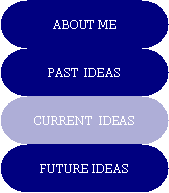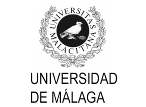|
School of Economics |
|
Universidad de Malaga |




|
Current ideas |
|
Here you can find some of my current research:
The Types They Are a-Changin' An Experimental Study of Persistence of Types in Level-k Models (joint with D. Cooper, E. Fatas and S. Qi)
Level-k models (as well as related models like cognitive hierarchies and noisy introspection) have become an increasingly popular way of incorporating bounded rationality into game theory and have been successfully employed to model behavior in a wide variety of games (Stahl and Wilson, 1995, Camerer, Ho and Chong, 2004, Goeree and Holt, 2004, Crawford, Costa-Gomes and Iriberri, 2013, Arad and Rubinstein, 2012, Goeree, Louis and Zhang, 2014). Implicit in these models is the idea that individuals have a type, consistently employing a certain depth of reasoning in thinking about games. In our experiments, subjects make choices in a series of two player games without any feedback. All of these games are drawn from the class of games with the local payoff property (Anderson, Goeree, and Holt, 2002). This implies that Level 1 players should respond to changes in their own payoffs but not changes in the other player’s payoffs, while Level 2 (and higher) players should respond to changes in the other player’s payoffs but not their own. On aggregate, behavior looks much like Level 1 behavior as subjects respond strongly to changes in own payoffs but not other’s payoffs. However, on an individual level, changes in play across games are not consistent with any type. Fitting a mixture model based on Level-k, we find that the majority of subjects are a “mixed type” that switches between Level 0, Level 1, and Level 2 from game to game. This finding is robust to a large number of alternative formulations of the model, including changes in the distribution of choices by Level 0 players, addition of higher levels, and inclusion of beliefs more in line with a cognitive hierarchies approach. The level-k model remains a useful predictive tool, but interpretation of the model is problematic.
An individualistic approach to institution formation in public good games (with A. Ramalingam, S. Godoy and J. Walker) In a repeated public goods setting, we explore whether individuals, acting unilaterally, will provide an effective sanctioning institution. Subjects first choose unilaterally whether they will participate in a sanctioning stage that follows a contribution stage. Only those who gave themselves the “right” to punish can do so. We find that the effectiveness of the institution may not require provision of the institution at the level of the group. Individuals acting unilaterally are able to provide sanctioning institutions that effectively raise cooperation. The effectiveness of the institution, however, depends on whether the “right” to sanction entails a monetary cost or not .
Social competition in Cournot markets We offer theoretical and experimental evidence suggesting that social competition has a first order effect in low-information Cournot markets. Using data from a stylized laboratory experiment, we show that firms use average market profits as a reference point to assess their relative performance following a simple but powerful logic: earnings above the market reinforces their current choice; scoring below the market prompts dissatisfaction and experimentation with new quantities. This “win-stay, lose-shift” heuristics converges to the competitive outcome because the Walrasian quantity is the unique action that never yields profits below the average profits in the market. This prediction is neatly confirmed in the lab. Social competition leads to Walrasian quantities even when firms do not receive information about the most successful rival, and imitation is not possible.
Money Illusion in Price Competition: Theory and Experimental Evidence An experimental investigation of money illusion in duopoly markets is carried out. Firms decide first a market and then compete in prices. Markets are equivalent in real terms and only differ in the currency the price competition is run under. The experiments show a persistent monotone money illusion effect: prices increase with the nominal exchange rate. An equilibrium model based on the joint assumption of coarse grid pricing and the theory of prominent numbers captures treatment effects, price distributions and modal prices across experimental markets and accounts for more than 90% of all symmetric price profiles observed in the laboratory.
The joy of ruling. An experimental investigation on collective giving We analyze collective giving through an aggregating mechanism that selects a common donation level from a type profile reported by the donors. We outline a theoretical model of collective giving and experimentally test a prediction of equal reporting behaviour in different mechanisms and test it in the laboratory. Our experimental results suggest that subjects fail to report the same donation because their behaviour is driven by a joy-of-ruling when imposing one's decision on others does not have consequences in their material payoffs. When imposing one's decision is detrimental to material payoffs, welfare concerns eclipse the pure joy of ruling and subjects turn into responsible rulers who adjust their reported type to the expected type of others. This is especially true for altruistic guys, who act as benevolent dictators
“One equivalence result for logit QRE and level-k model and one intuitive contradiction” The logit QRE has comparative statics properties that are in some cases more intuitive than for the standard NE, and it explains experimental data that are consistent with intuition but are not predicted by the Nash equilibrium. In this paper we show that level-k model reproduces the same comparative statics and offers predictions close to the logit QRE within the class of (symmetric) games with the local payoff property. We show that this equivalence is broken once asymmetric payoffs are introduced in the games and we offer experimental evidence in them.
|
|
Last updated: 03 August 2015 |